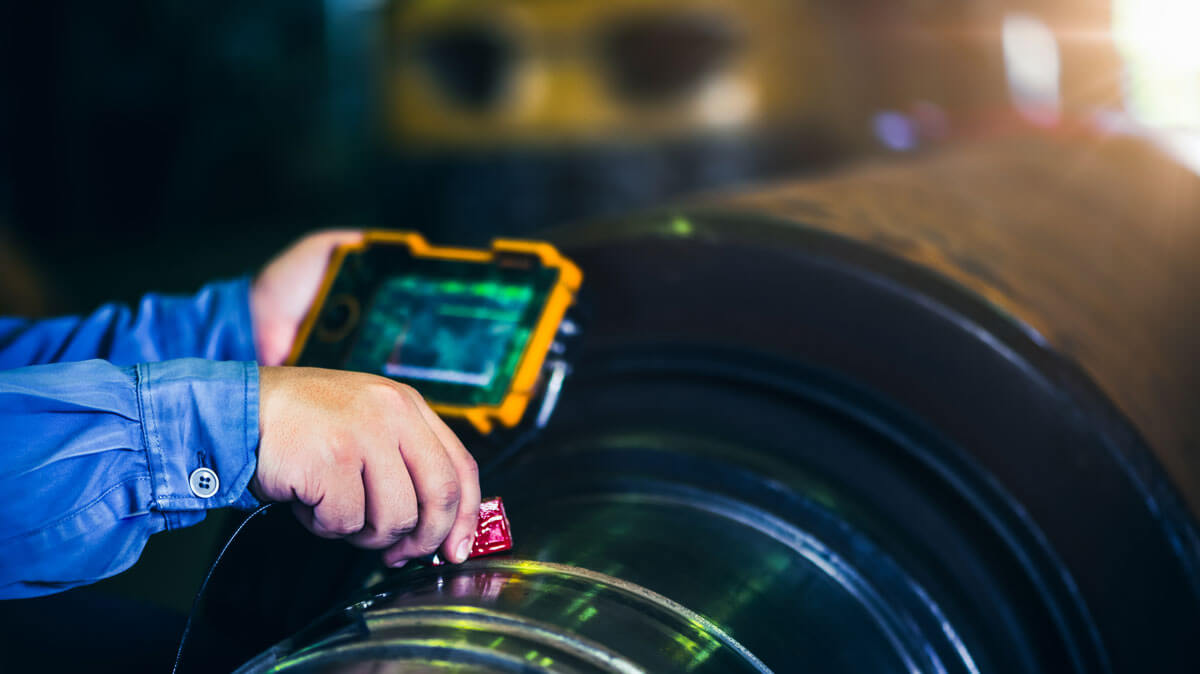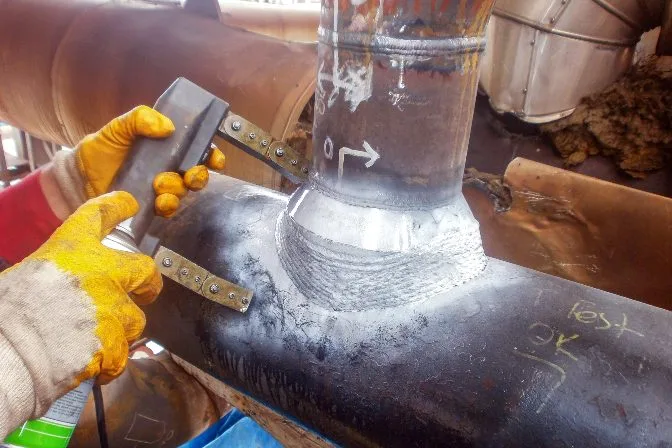The Influence of Rigorous Welding Assessment on Sector Standards: Encouraging Security, Reliability, and Compliance Across Various Fields
The duty of strenuous welding assessment is progressively identified as an important element in improving sector criteria, where integrity, security, and conformity take precedence across varied markets. What changes might we prepare for in welding techniques as the demand for quality and security magnifies?
Relevance of Welding Inspections
Acknowledging the crucial function of welding evaluations in maintaining quality and safety and security criteria, industry experts focus on these evaluations to make certain architectural honesty. Welding inspections act as a vital checkpoint in the manufacture procedure, identifying flaws that could endanger the resilience and safety of welded structures. By methodically evaluating welds, examiners can spot problems such as incomplete penetration, porosity, and splits, which may not be visible to the nude eye.
The value of these assessments prolongs past simple conformity; they are important for safeguarding lives and securing financial investments. In critical markets such as construction, aerospace, and production, a single defective weld can lead to disastrous failings, resulting in both financial loss and human casualties. Executing rigorous examination procedures mitigates these risks and boosts total job reliability.
Moreover, constant welding inspections promote a culture of top quality throughout companies, encouraging welders to comply with finest practices and preserve high standards in their job. This dedication to high quality not only boosts operational performance however also enhances the credibility of companies within their corresponding fields. Therefore, welding evaluations are crucial in promoting security, reliability, and compliance throughout various industries.
Key Industry Standards and Rules
The framework of welding inspections is underpinned by a robust collection of industry standards and regulations that govern practices across various markets. Key institutions, such as the American Welding Society (AWS) and the International Company for Standardization (ISO), establish guidelines that guarantee top quality and safety and security in welding operations. For instance, AWS D1.1 outlines important requirements for welding steel structures, while ISO 3834 specifies high quality demands for combination welding.
In enhancement to these particular criteria, sector regulations like the American National Specification Institute (ANSI) and Occupational Safety And Security and Health Administration (OSHA) requireds even more enhance compliance by establishing safety methods and functional best practices. These laws are vital in sectors such as aerospace, manufacturing, and construction, where welding honesty is critical.
Additionally, sector-specific criteria, such as those from the American Society of Mechanical Engineers (ASME) for stress vessels, supply additional layers of examination to make sure that welds meet stringent safety and efficiency standards. Adherence to these standards not only helps with governing conformity yet also cultivates a culture of quality and dependability throughout the welding market, eventually securing public welfare and improving operational effectiveness.

Benefits of Compliance and Reliability
Regularly sticking to industry standards and laws in welding assessments returns significant advantages, improving overall dependability and efficiency. The foremost benefit is the guarantee of high quality in bonded joints, which straight contributes to the security of structures and tools. Conformity with well-known criteria decreases the danger of failing and tragic cases, thus safeguarding both human life and useful properties.
Additionally, organizations that prioritize extensive welding examinations cultivate a culture of liability and expertise. This dedication not only reinforces the track record of the company but additionally instills self-confidence in clients and stakeholders pertaining to the stability of product or services. Reliable welding processes cause lowered expenses related to rework, repair work, and prospective legal obligations originating from substandard workmanship.
In addition, keeping compliance with sector requirements promotes smoother governing interactions, as companies can conveniently demonstrate adherence to necessary procedures (Welding Inspection Gilbert Arizona). This aggressive technique can lead to helpful collaborations and possibilities within the sector, as well as access to brand-new markets
Difficulties in Welding Inspection
Browsing the intricacies of welding evaluation provides a myriad of difficulties that can prevent compliance with sector criteria. One considerable obstacle is the irregularity in click for more info assessment methods and modern technologies. Various fields might utilize diverse approaches, bring about incongruities in the evaluation of weld top quality. The absence of standard training for examiners can result in varied analyses of evaluation standards, which might endanger safety and security and reliability.
Another challenge exists in the availability of advanced inspection devices - Welding Inspection Gilbert Arizona. While modern technologies such as ultrasonic screening and radiography can boost detection abilities, their application may be restricted by cost or availability, specifically in smaller procedures. This variation can cause a dependence on less reliable assessment approaches, boosting the risk of undetected flaws
Furthermore, the hectic nature of contemporary manufacturing commonly pressures assessors to focus on speed over thoroughness, possibly ignoring crucial issues. Lastly, regulative conformity can be daunting because of the developing nature of sector requirements, leaving organizations having a hard time to stay on par with the most recent demands. These challenges require constant improvement in inspection methods to make certain the stability of welded frameworks throughout various markets.
Future Trends in Welding Practices
Arising technologies and progressing techniques are established to transform welding practices in the coming years. Improvements in automation, such as robot welding systems, are obtaining grip, boosting precision and performance while minimizing human mistake. These systems will certainly not just accelerate manufacturing yet additionally facilitate consistent quality control, that site dealing with some of the challenges dealt with in manual welding.
Furthermore, the integration of man-made intelligence (AI) and artificial intelligence into welding procedures is positioned to change assessment and tracking. Real-time information analytics will certainly make it possible for anticipating upkeep, permitting for aggressive treatments that lower downtime and boost safety and security. Moreover, increased reality (AR) and virtual reality (VIRTUAL REALITY) modern technologies are ending up being instrumental in training welders, offering immersive experiences that improve ability growth without the risks related to typical approaches.
Sustainability is additionally a vital trend, as industries seek greener techniques. The fostering of eco-friendly products and approaches, along with energy-efficient machinery, will likely come to be conventional. As markets adapt to these changes, the focus will change toward better conformity with safety and ecological policies, making certain that welding techniques not only satisfy existing requirements yet additionally lead the way for a much safer and even more lasting future.

Verdict
In conclusion, extensive welding evaluations significantly enhance sector criteria by making sure security, dependability, and conformity throughout various fields. By methodically recognizing flaws and sticking to established guidelines, these assessments minimize dangers related to structural news failings. The promo of accountability amongst welders brings about higher quality outputs, fostering trust within communities. As sectors remain to focus on operational stability, the value of extensive evaluations will just enhance, eventually profiting organizations and society at huge.
The duty of strenuous welding assessment is progressively identified as a vital part in boosting sector criteria, where safety, dependability, and compliance take precedence across varied industries. Therefore, welding inspections are important in advertising security, dependability, and conformity throughout numerous markets.
Key organizations, such as the American Welding Society (AWS) and the International Organization for Standardization (ISO), develop guidelines that ensure top quality and safety in welding operations. AWS D1.1 details vital demands for welding steel frameworks, while ISO 3834 defines quality needs for combination welding.
In conclusion, rigorous welding inspections substantially enhance market criteria by guaranteeing security, integrity, and conformity throughout numerous markets.